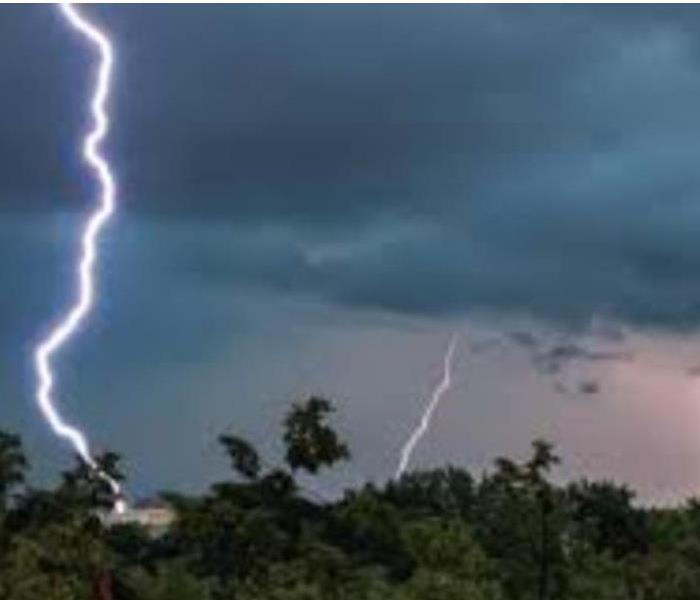Preparing Your Home for Severe Weather
10/4/2022 (Permalink)
Preparing for a Tornado
Every state has at least minimal risk for tornadoes, though the region spanning from South Dakota to Texas is nicknamed Tornado Alley for a reason. Tornado season spans the spring and summer seasons.
Before a tornado hits, follow these severe weather tips:
- Look outside for approaching storms and remain on alert for signs of a tornado, such as a dark sky, large hail, low-lying or fast-moving clouds, or roaring sounds.
- Listen to your NOAA Weather Radio, commercial radio or TV newscasts to remain informed. Follow the instructions given by local emergency officials.
- Recognize emergency alerts during a storm. A tornado watch means a tornado is possible. A tornado warning means a funnel has been spotted.
- If a tornado warning is issued, take shelter in the basement or storm cellar immediately. If your home doesn’t have an underground room, an interior bathroom is the best place to hunker down.
Preparing for a Hurricane
The Atlantic and Gulf of Mexico coastal regions are at risk for hurricanes. The Southwestern US can also experience heavy rains and floods from hurricanes generated off the coast of Mexico. Hurricane season lasts from June to November.
Before a hurricane hits, follow these severe weather tips:
- Learn the elevation of your property to understand your personal flood risk. Determine whether levees and dams in your area could affect you if they break.
- Become familiar with areas of higher ground in your city and determine how you would get there during an emergency.
- Make plans to secure your home, including covering windows with storm shutters or plywood; installing straps to fasten your roof to the frame structure; and reinforcing garage doors.
- Make plans to prepare your property, such as bringing un-tethered outdoor objects inside; trimming back trees and shrubs for better wind resistance; and determining how to secure your boat.
- Recognize emergency alerts during a storm. A hurricane warning means unrelenting winds of 74 miles per hour or higher are expected to create hurricane conditions within the next 36 hours. A hurricane watch is similar, but the alert is issued within 48 hours of the anticipated storm.
Preparing for a Thunderstorm
Thunderstorms are dangerous because they always produce lightning and may produce hail, strong winds, flash flooding, tornadoes and wildfires if lightning strikes the ground. Thunderstorms can occur anywhere in the US and are most likely during the summer.
Before a thunderstorm hits, follow these severe weather tips:
- Prepare your home by shuttering windows and doors, and unplugging sensitive electronics.
- Prepare your property by removing damaged tree branches that could fall during a storm, and bringing outdoor objects inside.
- Watch the sky and tune in to your NOAA Weather Radio for information.
- Recognize emergency alerts during a storm. A severe thunderstorm watch means stormy conditions are likely to occur. A severe thunderstorm warning means radar indicates severe conditions exist.
- If a severe thunderstorm warning is issued, danger is imminent. Seek shelter inside or within a hard-topped vehicle if no buildings are nearby.
General Tips
- Build an emergency kit: You need food, water and basic disaster supplies to last 72 hours. Assemble your emergency kit well before severe weather strikes. You may have to evacuate at a moment’s notice, so keep your emergency kit in an easy-to-access place.
- Create a family communication plan: Your family may be scattered around town at school, work and daycare when a storm hits. That’s why you should create a family communication plan now. Establish how you’ll get in touch, reunite and handle different situations. Make sure every family member has their parents’ and siblings’ cell phone numbers memorized.
- Learn your city’s evacuation plan: If you live in a storm-prone area, your community may have established evacuation routes to leave the area safely and quickly. Learn about these plans and share them with your family.





 24/7 Emergency Service
24/7 Emergency Service
